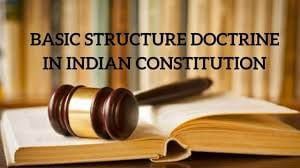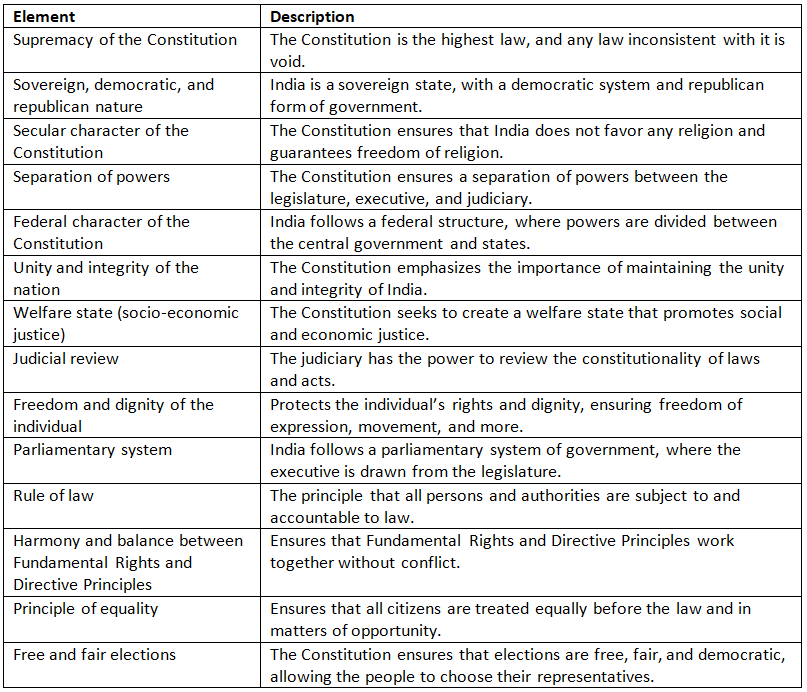Cheat Sheet: Basic Structure of the Constitution | Indian Polity for UPSC CSE PDF Download
Introduction
This document provides a detailed chronology of the development of the "basic structure" doctrine in Indian constitutional law. The doctrine, which emerged through several landmark Supreme Court cases, asserts that there are certain fundamental features of the Indian Constitution that cannot be amended by Parliament. This chronology covers key cases, amendments, and judicial pronouncements that have shaped the understanding of the basic structure of the Constitution, highlighting the evolution of constitutional principles and their impact on the Indian legal and political system.

Emergence of Basic Structure
1. Shankari Prasad Case (1951)

2. Sajjan Singh Case (1964)

3. Golak Nath Case (1967)

4. 24th Amendment Act (1971)

5. Kesavananda Bharati Case (1973)

6. Indira Gandhi Case (1975)

7. 42nd Amendment Act (1976)

8. Minerva Mills Case (1980)

9. Waman Rao Case (1981)

Elements of the Basic Structure

Conclusion
The evolution of the basic structure doctrine through landmark Supreme Court cases has ensured the protection of certain fundamental features of the Indian Constitution. These judicial pronouncements have established key principles that safeguard the Constitution's integrity and ensure that certain essential elements, such as the sovereignty of India, secularism, and judicial review, remain unaltered by constitutional amendments. This doctrine has become a cornerstone of constitutional law in India, emphasizing the importance of preserving the Constitution’s core values and ensuring that Parliament’s amending powers are not used to undermine the fundamental structure of the state.
|
151 videos|780 docs|202 tests
|





















